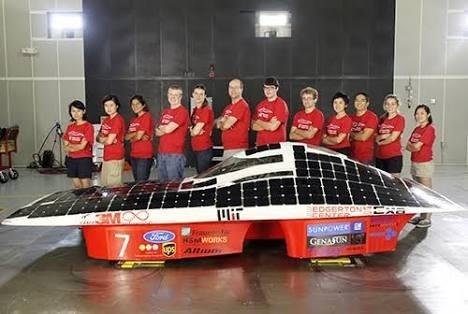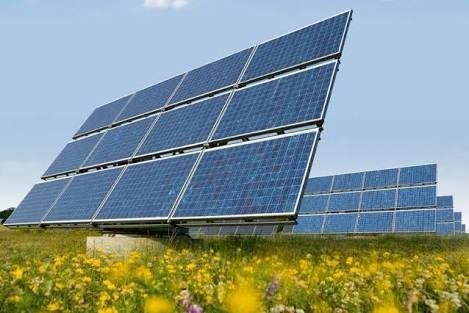What Tech Is Next for the Solar Industry? MIT Technology Review.
Solar panel installations continue to grow quickly,
but the solar panel manufacturing industry is in the doldrurns because supply far exceeds demand. The poor market may be slowing innovation, but advances continue; judging by the mood this week at the lEEE Photovoltaic's Specialists Conference in Tampa, Florida, people in the industry remain Optimistic about its long-term prospects. The technology that’s 3 raisee almost everyone to is conventional crystalline ‘ilicon. A few years ago, silicon solar panels cost $4 er watt, and Martin Green, professor at he University of New South Wales and one f the leading silicon solar panel researchers, declared that they’d never go 15 below $1 a watt. “Now it’s own to something like 50 cents a watt, and there’s talk of hitting 36 cents per watt,” he says.

The US. Department of Energy has set a goal of reaching less than $1 a wat not just for the solar 20 panels, but for complete, installed systems-by 2020. Green thinks the solar industry will hit that target even sooner than that. If so, that would bring the direct cost of solar power to six cents per kilowatt-hour, which is cheaper than the average cost of natural gas power plants. 
Solar panel installations continue to grow quickly,
but the solar panel manufa turing industry is in the doldrurns because supply far exceeds demand. The poor market may be slowing innovation, butadvances continue; judgingl by the mood this week at the lEEE Photovoltaic's Specialists Conference in Tampa, Florida, people in the industry remain Optimistic about its long-term prospects. The technology that’s rarised almost everyone to is conventional crystalline silicon. A few years ago, silicon solar panels cost $4 er watt, and Martin Green, professor at he University of New South Wales and one f the leading silicon solar panel researchers, declared that they’d never go 15 below $1 a watt. “Now it’s own to something like 50 cents a watt, and there’s talk of hitting 36 cents per watt,” he says.
The US. Department of Energy has set a goal of reaching less than $1 a wat not just for the solar 20 panels, but for complete, installed systems-by 2020. Green thinks the solar industry will hit that target even sooner than that. If so, that would bring the direct cost of solar power to six cents per kilowatt-hour, which is cheaper than the average cost of natural gas power plants.
All parts of the silicon solar panel industry have been looking for ways to c t costs and improve the power output of solar pane s, and that’s led to steady cost reductions. Green poi ts to something as mundane as the pastes use: to screen-print some of the features on solar panels Green’s lab built a solar cell in the 1990 that set a r-cord efficiency for silicon solar cells-a record that st: nds to this day. To achieve that record, he had to use expensive lithography techniques to J. ake fine wires for collecting current from the solar cell. But gradual improvements have made it possible to use screen printing to produce ever-finer lines. Recent research suggests that screenprinting techniques can produce lines as thin as 30 micrometers-“about the width of the lines Green used for his record solar cells, but at
costs far lower than his lithography techniques.